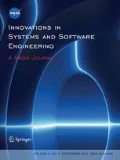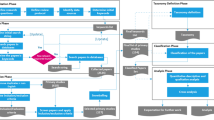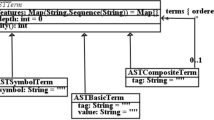Abstract
In Use cases considered harmful, Simons has analyzed the logical weaknesses of the UML use case notation and has recommended to “fix the faulty notion of dependency” (Simons: Use cases considered harmful. 29th Conference on Techn. of OO Lang. and Syst., pp 194–203, 1999). The project sketched in this position paper is inspired by Simons’ critique. The main contribution of this paper is a detailed meta model of possible relations between use cases. Later in the project this meta model is then to be formalized in a natural deduction calculus which shall be implemented in the Prolog. As a result of such formalization a use case specification can be queried for inconsistencies as well as for test cases which must be observable after a software system is implemented based on such a use case specification. Software tool support for this method is also under development.
Similar content being viewed by others
References
Back RJ, Petre L, Paltor IP (1999) Formalizing UML use cases in the refinement calculus. Technical Report TUCS-TR-279
Bisova V, Richta K (2000) Transformation of UML Models into XML. In: ADBIS-DASFAA symposium, pp 33–45
den Haan N (1995) Investigations into the application of deontic logic. LNCS 897
Genilloud G, Frank WF (2004) Use case concepts using a clear, consistent, concise ontology. J Object Technol 4/6. Special Issue: Use case modeling at UML-2004
Kolaczek G (2002) Application of deontic logic on role-based access control. J Appl Math Comp Sci
Kotb Y, Katayama T (2006) A novel technique to verify UML use case diagrams. IASTED Conf Softw Eng 300–305
Kulak D, Guiney E (2004) Use cases—requirements in context, 2nd edn. Addison Wesley/Pearson, Reading
Li L (2000) Translating use cases to sequence diagrams. In: Proceedings of ASE, pp 293–296
Maibaum T, Khosla S, Jeremaes P (1986) A modal action logic for requirements specification. Softw Eng 86
Metz P (2004) Revising and unifying the use case textual and graphical worlds. PhD Thesis, promoted by W. Weber and J. O’Brien, Department of Computing, Cork Institute of Technology, Ireland
Routledge N, Bird L, Goodchild A (2002) UML and XML schema. In: Proceedings of 13th Australian DB conference, pp 157–166
Ryndina K, Kritzinger P (2005) Analysis of structured use case models through model checking. S Afr Comput J 35: 84–96
Segerberg K (1982) A deontic logic of action. Stud Logica 41: 269–282
Simons A (1999) Use cases considered harmful. In: 29th Conference on Technology of OO Lang. and Syst., pp 194–203
Snook C, Butler M (2008) UML-B and Event-B—an integration of languages and tools. In: Proceedings of IASTED international conference on software engineer (SE2008), February, Innsbruck (A)
Author information
Authors and Affiliations
Corresponding author
Additional information
This project is supported by Formal Methods Europe as well as the Research and Development Programme of the University of Pretoria.
Rights and permissions
About this article
Cite this article
Gruner, S. From use cases to test cases via meta model-based reasoning. Innovations Syst Softw Eng 4, 223–231 (2008). https://doi.org/10.1007/s11334-008-0058-z
Received:
Accepted:
Published:
Issue Date:
DOI: https://doi.org/10.1007/s11334-008-0058-z




